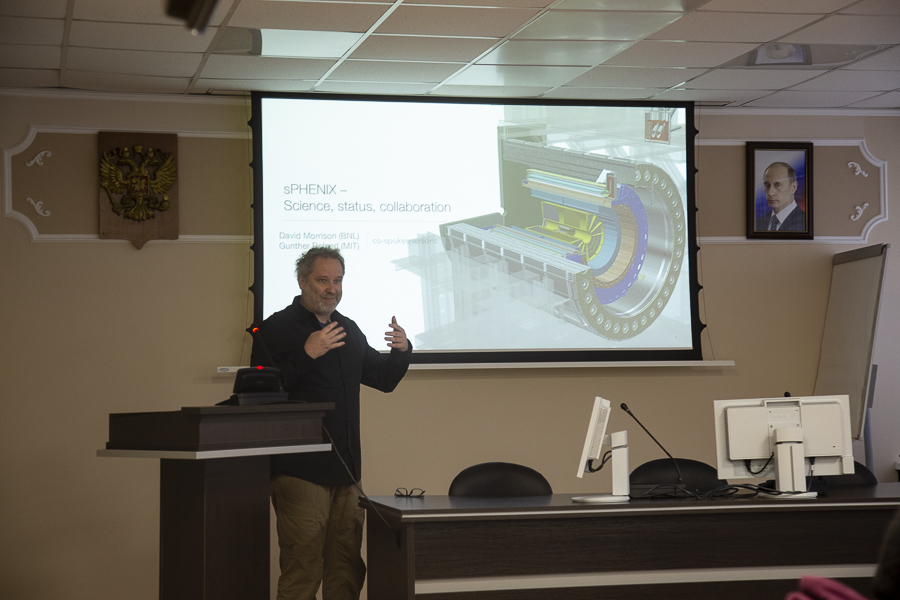Research conducted at the Relativistic Heavy Ions Collider (RHIC) has showed that the original state of the Universe was a "soup" known as quark-gluon plasma, which is an almost ideal liquid. Its properties are now being studied by the sPHENIX international collaboration with the participation of the National Research Nuclear University MEPhI. The co-head of sPHENIX project, Professor of the Massachusetts Institute of Technology Gunther Roland told about the course of the studies and how they could benefit mankind at a collaboration meeting at MEPhI.

The quark-gluon plasma is a high-temperature state in which the matter of the Universe was in the first moments after the Big Bang (after a period of its accelerated expansion, when it reached a size approximately equal to that of the solar system). There are several hypotheses that matter can exist in this state in the center of very dense stars.
Scientists from the sPHENIX collaboration, trying to determine the properties of the quark-gluon plasma, have endeavored for the last 15 years either to confirm or deny these hypotheses.
"We have discovered that this is the most ideal liquid in existence. But it is still unclear how this property is related to the components of quark-gluon plasma. As it follows from its name, it consists of quarks and gluons. But we are yet to clarify how they interact and if there are any new bound states formed of quarks and gluons that can produce such liquidity at the output," commented co-head of the sPHENIX collaboration Gunther Roland.
This is why sPHENIX scientists are working to build a powerful "microscope" to be able to look into quark-gluon plasma and investigate details of its microscopic structure.
"The liquid properties are in fact plasma’s long distance properties, or, in other words, those in the long-wave area. We know that plasma consists of point quarks and gluons at very short distances. Something very interesting should happen during the transition from point items to properties of quark-gluon plasma at long distances. This is why we are working on a "microscope" that will show what happens between these two extreme scales of distances," said Gunther Roland.
According to the scientist, the study of quark-gluon plasma is one of the determinative probes into the fundamental properties of nature. The ability of quark-gluon plasma to be an almost ideal liquid relates to a strong interaction between its components, the essence of which has yet to be described.
However, plasma also belongs to strongly bound materials, that can be found in many various fields of physics. Some of these exist only in theory (for example, in string theory), some can be reproduced in a laboratory (such as ultracold atoms systems). Therefore, the sPHENIX collaboration, while studying quark-gluon plasma, seeks not only to elucidate strong interaction properties, which in itself is of great scientific value, but also to relate this research with other areas of science.
The sPHENIX collaboration is the successor of the PHENIX experiment. However, the equipment that is planned to be used in the sPHENIX installation has little in common with its predecessor. Working in the same building the scientists use the same power supply and cooling system. But the very scientific equipment that registers collisions and records all subatomic particles is completely new, because data recording systems should have fundamentally different capabilities to describe the origin of quark-gluon plasma's properties.
The new project involves a dozen countries, more than 75 research institutes and several hundred specialists, including Russian scientists and engineers.
"One of the key aims of our visit to Russia and the National Research Nuclear University MEPhI is to expand our team. We discussed the specific contribution of the Russian University to the experiment in great detail. Work with certain types of detectors – elements of the sPHENIX installation – goes back a long time and has been fruitful," said Gunther Roland.
According to him, it is assumed that MEPhI will play an important role in the creation of calorimeters – new recording subsystems that did not exist before. This new type of calorimeter is a key element of the sPHENIX project.





